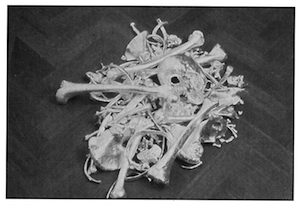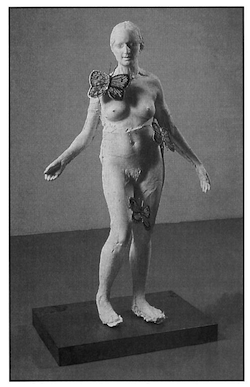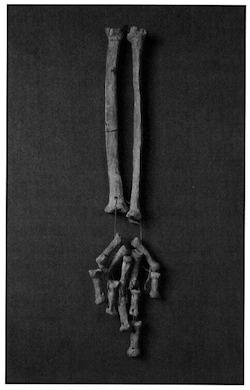In the popular imagination developed by a modern scientific education, death is most often supposed to be a terminal state, a nothingness, an oblivion, a void that destroys life, that swallows it up forever. It is aligned with sleep, darkness, and unconsciousness. It is feared by those who feel happy, or feel they should be happy. It is sought after by those who are in misery, filled with unbearable pain and anguish, as a blessed final anesthesia. But science should not neglect to question this picture. In fact, inner science begins with the analysis of nothingness. Nothing is after all just nothing. It cannot be a place that resembles an idea of nothingness. A place involves area, or extension. It is defined by coordinates and boundaries. It is not nothing. It is room. Nothing has no room, nor can anything be located within nothing. Nothing cannot have an inside or an outside. It cannot destroy, swallow, or terminate. As nothing, it can have no energy or effect. As nothing, it cannot be a thing, a realm, a state, or anything. It is absolutely nothing to fear. It is nothing to hope for.

The ultimate end of everything, the diametric opposite of all, is nothing in itself. And yet we think of nothing as something. Clearly, “nothing” is that conceptual entity that shows more clearly the illusory status of all conceptual entities. To use the verb “exist” about it is a misuse of language. To refer to nothing as “it,” “this,” “that,” or whatever, without quotes, is a mistake, as only the concept can be referred to. “Nothing” is categorically unimaginable, so it is incorrect to picture nothing as a destination. It is wrongly imagined to be a ground state giving off no reading, which appears as an EEG flatline. It is incoherently imagined to be an anesthesia following a loss of all sensation. It is wrongly conceived to be a place of quiet within which consciousness can slip. It cannot be entered.
We associate sleep with refreshment, rest, peace, and quiet. Someone with a mental or physical sickness who cannot sleep is considered to suffer torture, and sleep deprivation will destroy anyone’s body before too long. We love sleep. Actually sleep does not correspond with a flatline, absolute lack of brain activity. Our brains can be more active during dreaming than in some waking states. Sleep is thus materialistically very different from the death state of a corpse. When we imagine death as entry into nothingness, we are merely comforting ourselves. Our sense of death as a sleep is a mere analogy even from a materialistic perspective. It is also likely that the dualistic model of “liberation” that motivates Individual Vehicle Buddhism and mystical forms of Hinduism, Taoism and Western monotheism—a model of liberation as a state of absolute aloofness from the world of life—is derived from this universal human experience of sleep. In most cultures, sleep is accepted as a blissful withdrawal into an aloof state of peace, a restful separation from troubles, worries, pains, and entanglements. So religious ideals of nirvana, conceived as a state apart, ultimate liberation from pain and sorrows, or a supreme release, may be nothing but guaranteed states of permanent, gloriously unconscious sleep!

When we see this equation, we can understand at once why materialists scoff at spiritual or religious forms of liberation. Why would they need it? They have already guaranteed themselves permanent rest. They have a guaranteed nothingness waiting for them, attained without the slightest effort on their part, without ethical sacrifice, without realization, without developing any skill or knowledge. All they have to do is fall asleep, a skill they have already cultivated during thousands of nights.
But what is it that guarantees them a restful nothing awaiting them after death? Do they have any credible evidence? No one has ever returned to report entry into nothingness. They have no recorder, no viewer, no extension of their senses into the subjectivity of a dead person. They cannot physically probe into the brain-dead state of any being. They have no convincing description of nothingness, which obviously has no attributes. They have never observed even one material thing become nothing. Why should the energy reality of a state of awareness, be it even a minimal awareness of pure rest, be the exception to the law of physics that energy is conserved and only transformed? What makes the materialists believe so powerfully in the nothingness of that one energy continuum?
The answer is, obviously, that they have no grounds at all for this belief. It is merely a belief based on brave assertion, corroborated by many other believers, all without a shred of evidence, reinforced by constant repetition and dogmatic insistence. It provides ultimate comfort, satisfying the religious urge to have a complete sense of reality. This comfortingness might give rise to suspicion or doubt, so it is disguised for the materialist by the pretense that nothingness is something frightening, something undesirable, a bitter pill that he or she, the brave modern human grown-up, has learned to swallow.
This is why materialist scientists are so dogmatically dismissive of evidence about the post-death continuity of consciousness. They cannot consider the evidence even casually, because this would generate questions about their own belief. Like any religious dogmatism, since it is a logically weak belief, often admittedly irrational, based on no credible evidence, it cannot allow even the slightest questioning, for fear that the resulting doubt could not be withstood.
In fact, a considerable body of credible evidence supports the probability of post-death existence of consciousness and sentient future life continuity. First, it is the natural thing to expect, since everything else in nature exhibits continuity through changes. Second, many credible witnesses report that they died and experienced certain adventures. Some died clinically and were revived. Some remember as children details and circumstances of former lives, and some of their memories are corroborated by other people, standing up to the investigation of reputable researchers. Some codify the data collected in various ways and present it in manuals in traditions of dying used in many cultures. And the majority of humans in most civilizations feel they must have some concern for the state of their awareness in the future lives they will be obliged to face.
For even the most diehard materialist, Pascal’s famous “wager” is still compelling: If we become nothing after death, we will not be there to regret having prepared for something. But if we are something after death, and we have not prepared at all, or are badly prepared, then we will long feel bitter, painful regret. So we have everything to lose by not preparing, and nothing to gain; we have everything to gain by preparing, and nothing to lose. Should our preparation be for nothing, a little time spent on it in this life will not be regretted for eternity. Should our preparation be for something, the time taken away from it for the sake of this life’s business or pleasure will be deeply regretted for eternity as the waste of a vital resource.
To fall back on particular religious beliefs supported by no rational evidence or plausible inference is not sensible, given the fact that our choices of actions might have unlimited consequences. Having cured ourselves of the temptation to reify nothingness, why would we reify some improbable soul-state that reproduces the characteristics of pleasant nothingness—a blissful anesthesia, aloofness from connection to conditions, permanent isolation from experience, and all guaranteed by an absolute, nonrelative power that controls the relative yet is unaffected by it? Here, rather, we should use Pascal’s wager in reverse. If, due to an inevitable destiny of soul, an Omnipotent Being will save us no matter what we do, we will not regret having spent a bit of time preparing unnecessarily to save ourselves. But if there is no such Being, or if there are divine Beings more powerful than us who can help us if we are prepared to accept their help, then we will deeply regret for a very long time our failure to prepare ourselves.

A nourishing, useful, healthful faith should be no obstacle to developing a science of death. In developing such a science, it behooves the investigator to consider all previous attempts to do so, especially those traditions with a long development and a copious literature. Of all these, the science of death preserved in the Indo-Tibetan tradition is perhaps the most copious of all.
Given the boundless interconnectedness of living forms, beginningless and endless, and spread throughout an infinity of space, the materialist picture of evolution as natural selection operating purposelessly, yet efficiently developing life-forms through random mutation from a definite beginning point within a finite theater of planetary environment, needs some revision. First of all, postulated definite beginnings and finite settings are always suspect. The materialist account describes reasonably the material, causal development process, but why should not mind as well as body develop and mutate?
The Buddhist view of all this, the psychobiological evolutionary account known as the “theory of karma,” is very like the Darwinian idea of evolution.
Karma means action that causes development and change, and so is close to what we mean by evolution. In Buddhist science, it has nothing to do with fate—it is an impersonal, natural process of cause and effect. Our karma at a given moment of life or death or between is the overall pattern of causal impulses resulting from former actions connected with our life-continuum. These form a complex that impresses its effects on our bodies, actions, and thoughts. In turn, our ongoing actions of body, speech, and mind form new causal impulses, which determine the nature and quality of our lives in the future. This complex can be called ourevolutionary momentum. There is an old Tibetan saying, “Don’t wonder about your former lives; just look carefully at your present body! Don’t wonder about your future lives; just look at your mind in the present!” This expresses the sense that our present body has evolved from a long evolution driven by former actions, and our future embodiments will be shaped by how we think and what we decide to do in our present actions.
The time of the between, the transition from a death to a rebirth, is the best time to attempt consciously to affect the causal process of evolution for the better. Our evolutionary momentum is temporarily fluid during the between, so we can gain or lose a lot of ground during its crises. Tibetans are highly aware of this. It is why they treasure the Book of Natural Liberation so much as a guide to bettering their fate.
Thank you for subscribing to Tricycle! As a nonprofit, we depend on readers like you to keep Buddhist teachings and practices widely available.